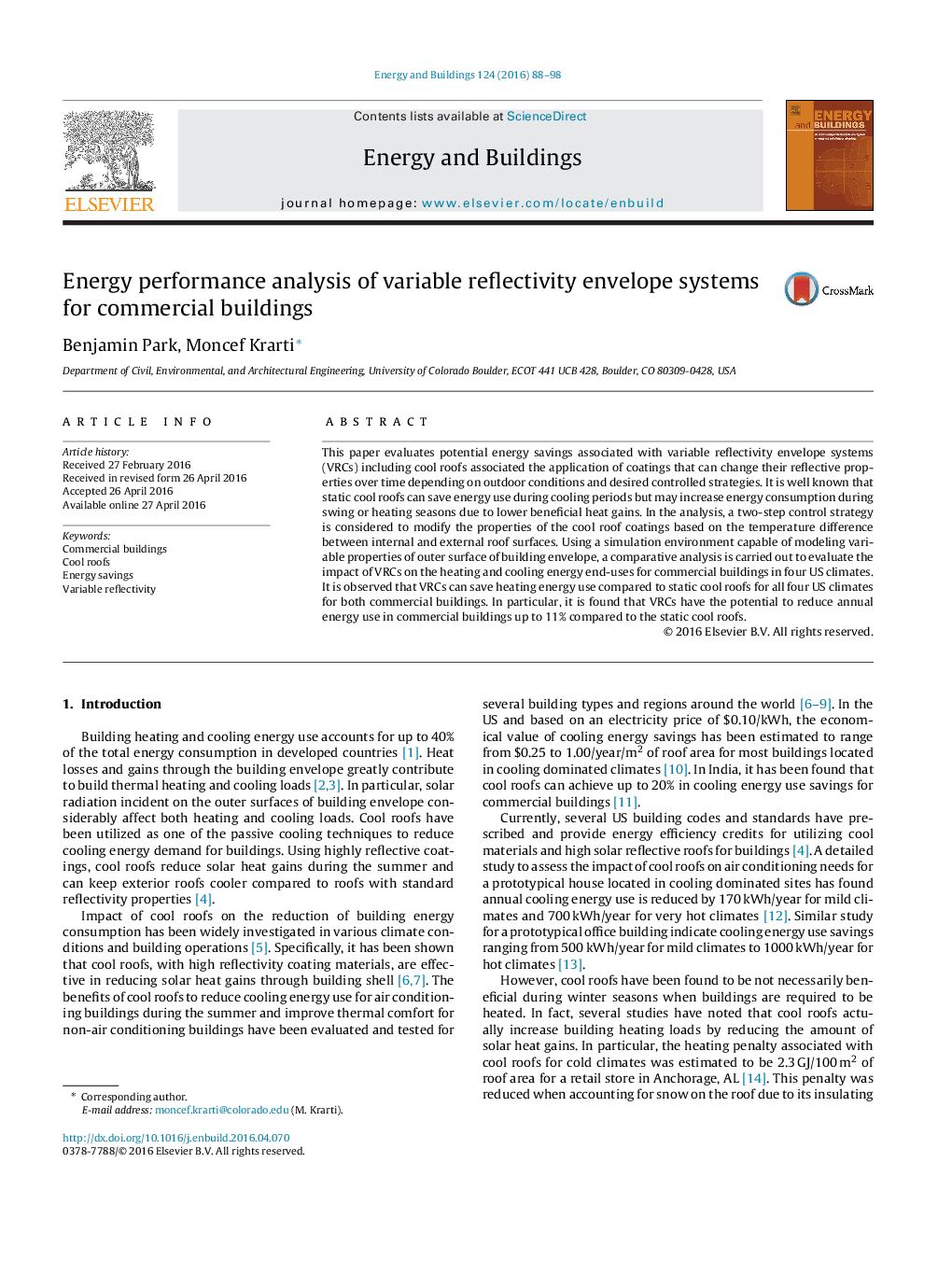| Article ID | Journal | Published Year | Pages | File Type |
|---|---|---|---|---|
| 262091 | Energy and Buildings | 2016 | 11 Pages |
This paper evaluates potential energy savings associated with variable reflectivity envelope systems (VRCs) including cool roofs associated the application of coatings that can change their reflective properties over time depending on outdoor conditions and desired controlled strategies. It is well known that static cool roofs can save energy use during cooling periods but may increase energy consumption during swing or heating seasons due to lower beneficial heat gains. In the analysis, a two-step control strategy is considered to modify the properties of the cool roof coatings based on the temperature difference between internal and external roof surfaces. Using a simulation environment capable of modeling variable properties of outer surface of building envelope, a comparative analysis is carried out to evaluate the impact of VRCs on the heating and cooling energy end-uses for commercial buildings in four US climates. It is observed that VRCs can save heating energy use compared to static cool roofs for all four US climates for both commercial buildings. In particular, it is found that VRCs have the potential to reduce annual energy use in commercial buildings up to 11% compared to the static cool roofs.
